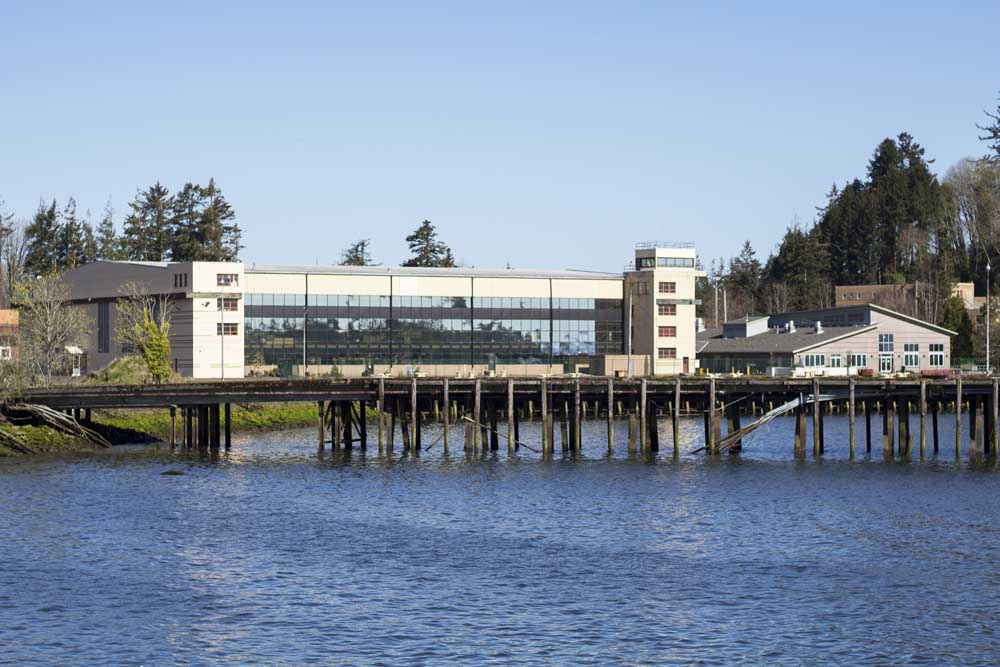Cash can’t stop the robot team at CCC
Published 5:00 pm Tuesday, June 5, 2012
Clatsop Community College has no engineering program; it employs one full-time physics instructor; theres no research wings; students have only prerequisite experience; and it sure doesnt have much money to spend on scholastic competitions.
But that didnt stop the colleges Remotely Operated Vehicle (ROV) Team, led by three science and engineering students and the colleges lone physics instructor Pat Keefe, from heading to the international finals of Marine Advanced Technology Educations ROV competition in Orlando, Fla., on a shoestring budget and competing against global research universities.
This is really important for engineers to get some real hands-on experience or going through the design process and not just reading about it in a book, said Keefe, whose ROV teams have qualified for the international competition seven out of the eight years theyve been involved. (The one year they didnt was because travel expenses prevented them from going to Hawaii.)
And when our college is able to go to an international competition and compete against universities: Wow; our students do just as well, if not better, than these universities, said Keefe. I think it was a real landmark that the community colleges in Oregon qualified, but the university didnt.
The team, including aspiring power engineer Joel Homolac, 22, computer engineering student Devon Abing, 36, biology student Wade Padgett, 23, and Keefe, only became complete as of spring term.
They were assisted by the colleges only engineering class, taught by adjunct instructor Cindy Moore from the city of Astoria, and Julie Browns technical report writing course.
The team qualified for the international competition May 12 along with 22 other institutions Linn-Benton Community College being the only other from Oregon. Larger and more endowed institutions such as Oregon State University and Washington State University couldnt pass the qualifying round.
The list gets more prestigious as you move along: British Columbia Institute of Technology (Burnaby, B.C.), Bauman Moscow State Technical University, Georgia Tech Savannah Robotics, Hong Kong University of Science and Technology and the Arab Academy for Science, Technology and Maritime Transport in Alexandria, Egypt.
People from a rural county generally the label is that theyre dumb. … Thats the label that we get, said Homolac. It just kind of proves that wrong. By the looks of our ROV?compared to everyone elses, it shows that we can take basically nothing and make it better than theirs.
This years submersible
The team works with an approximately $2,000 budget, some from donations, some from the colleges foundation and more from Keefes physics supply budget. Thomas Rochester, a late meteorologist with the U.S. Weather Bureau in Astoria, also left a trust with the college to start a meteorology program. The program resides within the physics department, and the trust provides about $2,000 a year to the ROV Team, said Keefe.
Keefe said $2,000 a year is probably enough to build a workable ROV his team has always qualified for the big competition when it could go but travel expenses are a big issue. Community members interested in donating to the ROV Club can contact Keefe at (503) 338-2434 or pkeefe@clatsopcc.edu
The members scour many of their supplies off of previous robots and buy others at local hardware stores. After qualifying in May, the team scrapped the existing ROV model and designed a new version.
Their current submersible, named Adrasteia (Inescapable), uses five bilge pump engines and a PVC pipe frame spray-panted red. Using a combination of two engines at a time and cameras on all four of its sides, the ROV can travel and see in any direction.
The electronics and cameras all come off previous iterations, and a neutral buoyant electronics tether runs to the surface, where the team controls the ROV from monitors using a Playstation 2 controller.
Were almost forced to keep things simple because we have a relatively low budget and maybe a relatively low level of experience, said Padgett. But I think theres something elegant to the simplicity of our ROV compared to some of the other ones.
If they have a technical problem, they have a lot of troubleshooting to figure out what that is. If we have a problem, we can kind of check a couple of wires and figure it out real fast and fix it.
Keefes team works in a small back room, lab materials covering every counter and shelf and parts of the submersible on a small work table in the back.
We dont have a testing place, either, said Abing about having to bring the ROV to the Astoria Aquatic Center. The college doesnt have its own pool, so we have to beg to be able to test this.
Adrasteia hasnt touched water yet, parts still being installed. Now that the team members classwork is cycling down with the end of spring term, work on the ROV is ramping up.
Homolac said that when it gets close to competition time, the team could stay in the lab as late as 3 a.m. working on the ROV.
We have $200 left thats all we have to buy parts, said Abing. So we need to save that money in case something happens while were down there.
Preparing for trip
The competition in Orlando takes place June 21 to 23. The team flies in a day or so early.
Competitors score points by successfully using their ROVs to survey and remove fuel from a shipwreck site. In 2006, its second year in the competition, CCC placed third while also winning a design elegance award.
With two weeks to go, this years team is focusing on installing Arduino motherboards to help control the lights, motors, and other actuators using fewer wires, building the arm to grab things underwater, adding a metal detector using magnets to help find debris and testing the submersible at the Astoria Aquatic Center.
Keefe said the main goal is to score at least 100 points in the competition a score of 300 is perfect. Padgett said hed be pleased to place in the top half of the competitors.
Just knowing it last-minute and kind of stumbling upon it (through) a class project, thats pretty good, said Abing about the teams performance to-date. And its nice because Ill be able to take this and apply it to my new field.
Next year
Abing will graduate from CCC this month with a certificate in Computer-Aided Drafting and Design, leaving for Portland State University to pursue his computer engineering degree. Homolac will take his second year at Portland Community College to continue his engineering studies. Padgett, though, will return next year to CCC and the ROV Team.
(Im) probably going to do a lot of different things like add better sensors accelerometers to tell us where it is in the water or tell us its even moving, said Padgett, adding that hed spread the work out more over the school year. I think perfecting this motor system will be important.
In a tough job market, engineering is always at the top of the list for high-paying, in-demand jobs, said Keefe. If you break all the engineering (degrees) up, its like seven of the top 10 high-paying positions are engineering.
Previous members of the ROV club have gone on to work for the Environmental Protection Agency and entered Ph.D. physics programs.
For more information on the competition, visit www.materover.org





